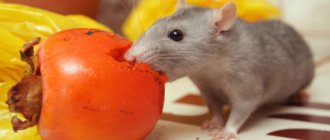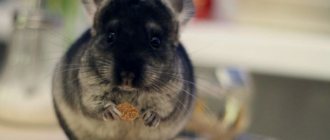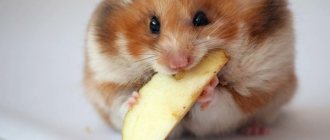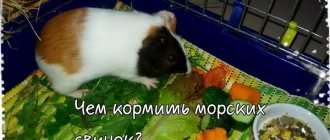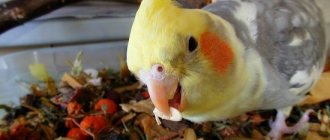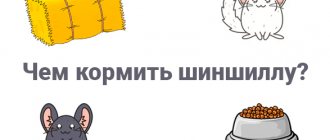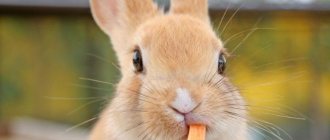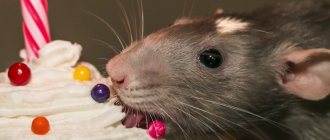With the arrival of summer, more seasonal products appear on our table: different varieties of berries, fresh home-grown vegetables, juicy greens straight from the garden. All of them contain a huge amount of useful substances and microelements. When we consume summer gifts for food, we often think about treating our pets to them. Hamsters, like other rodents, benefit from greens. Therefore, let’s consider whether hamsters can have parsley and dill, and how to serve them correctly.
Composition of parsley
Parsley is a very unpretentious plant, so it can grow in almost any soil. In most countries it is a popular addition to the main dish.
Contains many useful elements:
- B vitamins;
- ascorbic acid;
- folic acid;
- niacin;
- phosphorus;
- sodium;
- calcium and many others.
All these positive qualities have a positive effect on the connective tissues of the body, relieving symptoms of intoxication, and maintaining water-salt balance in the body.
There are two types of parsley: curly and ordinary, but both are equally useful.
Why does a hamster need grass?
Inexperienced rodent owners wonder: do hamsters eat grass? Fluffies love fresh greens, especially lettuce. Grass is one of the food sources for hamsters. It is suitable as an everyday food for Djungarian hamsters, Syrians and representatives of rarer breeds.
Greens for a hamster are:
- source of energy (contains carbohydrates and proteins);
- vitamins, primarily ascorbic acid and carotenoids;
- a storehouse of mineral compounds: potassium, calcium, iron, copper, manganese and magnesium, phosphorus, selenium, zinc;
- a source of fiber necessary for proper digestion;
- in some cases - a medicine;
- building material for the nest.
For small rodents living in nature, leaves and herbaceous plants act as shelter. There wild animals hide from their enemies. And they use dry and fresh leaves to build nests for babies.
As you can see, having fresh greens in your pet’s cage is very important. But not all grass can be given to Djungarian hamsters and Syrians.
Parsley in a hamster's diet
To ensure that all the necessary vitamins are regularly present in the animal’s body, it is necessary to give it greens. Parsley is one of the first candidates to be added to the main diet. It will not only replenish vitamins in the animal’s body, but will also have a positive effect on its digestive organs. In addition, there are special elite foods that consist of a special number of nutrients specifically for hamsters. And their contents definitely include parsley and dill.
Little ones are practically not allergic to such a product, so you can give them parsley without fear. You need to collect good greens; those growing near roadways are not suitable. Before use, you need to wash it well, without separating it from the stem, since all the components of parsley are equally useful.
How and how much to give
Food for a small rodent is selected taking into account its breed, age and health status. For full development and good health, a hamster requires a balanced diet. His diet should consist of:
- grain mixture;
- greenery;
- products of animal origin;
- vegetables and fruits.
Plant foods are a source of additional vitamins. This includes both grass and tree branches. The latter are necessary for a pet to grind down its incisors.
Plants in the diet of rodents should be combined with grain mixtures and animal products. It is important to understand that greens are not the main food, but an addition to the diet.
There are a few things you need to know before offering food to your hamster.
- A lot of bacteria and dust accumulate on the leaves of fresh greens. Therefore, the grass must be thoroughly washed under running water.
- It is better to choose young grass. The old one will be tough, which will cause damage to the rodent's cheek pouches.
- If the plant is lethargic, it should not be offered to the animal. Such greens will be less tasty and juicy. And if she lies in a cage for some time, she will begin to rot.
- Rodents should be offered several types of plants at once so that they receive the maximum amount of vitamins.
Greens can be given when the rodent is 1 month old. By this time, the animal is able to chew vegetables, fruits, and dry food on its own. The stomach of a month-old pet is already stronger.
Composition of dill
Dill is a short-lived plant, but it is a valuable product for health benefits and goes well with main dishes on the human table. All its parts have healing properties: leaves, stems and fruits (seeds). It is unpretentious to the soil, so it grows on almost all continents.
Dill is rich in the following elements:
- B vitamins;
- other vitamins: C, E, P;
- essential oil;
- organic acids;
- magnesium;
- phosphorus;
- iron and many others.
Dill improves immunity, has a beneficial effect on the cardiovascular system, and improves the functioning of the gastrointestinal tract.
What herbs should not be given to a hamster?
Among plant foods there are herbs that should not be given to rodents. They pose a danger to the animal and can cause harm to health.
- Sorrel is a plant that is too acidic. Irritates the gastric mucosa.
- Mint, lemon balm - aromatic herbs act as an allergen.
- Garlic and onions (feathers) - will not be liked due to their specific aroma and taste.
- The tops of tomatoes, potatoes, peppers and eggplants contain a toxic substance - solanine.
- Coniferous trees contain resin, which negatively affects internal organs. Causes a severe allergic reaction.
- Beet tops can be given to your hamster in limited quantities. Abuse of the product causes diarrhea.
- St. John's wort. While this is a medicinal plant for humans, it is dangerous for hamsters.
- Tarragon is given with caution. The herb is too aromatic and may cause an allergic reaction.
Animals look at indoor plants with curiosity. The leaves of your favorite flowerpot often end up in the hamster's teeth. If a houseplant is poisonous, it may harm the animal. Therefore, owners should keep flowers away from their pets.
Houseplants that pose a danger to your hamster:
- aloe;
- begonia;
- Kalanchoe;
- oleander;
- ivy;
- azalea;
- alpine violet;
- gloriosis;
- cycad;
- succulents.
Plants must be present in the rodent's diet. Every owner should know what plants can be given to a hamster so as not to harm him. The lifespan of rodents depends on their diet. Animals that eat greens on a regular basis are more active and less likely to get sick.
Other greens
If we consider other options for juicy, healthy greens for the Djungarians or Syrians, then the following options are suitable:
- Lettuce leaves are a favorite delicacy for hamsters; before eating, you need to wash the leaves well and renew the stem by cutting just above the end of the stem.
- Spinach will be useful for rodents with constipation; it has a beneficial effect on the digestive system.
But these plants should never be given to a hamster:
- Green onions contain a lot of sugar, which leads to obesity.
- Sorrel – Oxalic acid causes heartburn and bloating. Due to unpleasant sensations in the tummy, the animal may behave aggressively.
- Mint - the menthol contained in its composition irritates the walls of the stomach. May cause ulcers.
- Basil – contains an increased amount of essential oils, which will not benefit the home.
- Mushrooms - in any form are contraindicated for furry rodents; eating them can be fatal.
Hamster nutrition: do's and don'ts
It would seem that the answer to the question “What to feed a hamster?” very simple. However, in practice, feeding hamsters can raise many questions among inexperienced owners regarding whether this or that product can be given to their pet.
Hamsters must have a balanced diet
. This means that it will include not only ready-made dry food, which forms the basis of the diet, but also other products. In particular, you can give your hamster the following foods.
Cereals, nuts and seeds
. From cereals you can give wheat, oats, barley, buckwheat, rolled oats, lentils. They are given in dry form; Porridges cooked in water without salt or seasonings are fed to sick and weak animals. Nuts you can give are peanuts, hazelnuts, cashews, and walnuts. You can also give your hamster melon, pumpkin, sunflower and sesame seeds.
Vegetables, fruits and berries
. Hamsters' diet must include fresh fruits, berries and vegetables - a source of vitamins and moisture. Among the berries you can give currants, gooseberries, strawberries, pitted cherries, and blueberries. From fruits - apple, pear, apricot, melon, peach, banana, grapes, plum (in small quantities). Hamsters also enjoy eating dried fruits - dried apples and pears, raisins, dried apricots, banana chips.
Most vegetables are given to your hamster raw.
. You can treat your pet to pumpkin, carrots, bell peppers, tomatoes, cucumbers, radishes, radishes, zucchini, zucchini, beets, squash, turnips, green beans, fresh corn, Chinese cabbage, broccoli, fresh peas, young peas in pods. Occasionally and in small quantities, you can give cauliflower, peeled rose hips and celery. Some vegetables (pumpkin, carrots, beets and peas) can also be given boiled; they are cooked for a short time and without salt.
Greens, leaves and sprouts
. Hamsters' food may also include oat, wheat, bamboo and alfalfa sprouts. From greens you can give salad, dill, parsley, plantain leaves, dandelion leaves, nettles, clover. Hamsters also eat leaves of fruit trees (apple, cherry, pear), as well as other deciduous tree varieties (ash, beech, maple, willow, poplar, oak, birch, walnut).
All vegetables, fruits and berries that you give your hamster must be fresh, not overripe or spoiled
. Plants for a hamster should be collected away from roads and industrial enterprises. Any plant food should be washed thoroughly before giving it to your hamster.
Hamsters' diet also includes a protein component.
. This can be boiled chicken or low-fat boiled fish without seasoning and salt, low-fat fermented milk products (yogurt without additives and sugar, cottage cheese, kefir, all with a fat content of no more than 1%), boiled chicken or quail egg. Less often they give live food: butterflies, grasshoppers, mealworms, earthworms, dried gammarus. Any live food must be purchased at a pet store! Protein products are given to the hamster 2-3 times a week (of course, not all at once, but just one).
There are a number of foods that are not recommended to be included in a hamster's diet.
. They cannot be called strictly prohibited, but there is a high risk that they will cause irreparable damage to the health of your pet. These include cheese (especially fatty and salty varieties), acorns, Brazil nuts, persimmons, white bread, potatoes, as well as ready-made food for other rodents and birds.
Finally, there are foods that should absolutely not be given to hamsters.
. These include:
- salt, spices, sugar, both in pure form and as part of other products;
- fried, fatty, smoked food, any food from your table;
- exotic fruits (including pineapples, kiwi, avocado, pomegranate, citrus fruits), watermelon;
- fruit juices;
- leeks, garlic, mint, cabbage (white and red), sorrel;
- branches of coniferous trees, tulip, all plants and herbs collected within the city;
- cream, sour cream, milk, butter;
- muesli, breakfast cereals, kozinaki;
- almonds, apricot and cherry pits (contain hydrocyanic acid, which is lethal to hamsters);
- peel and eyes of raw potatoes;
- sausages, sausage, fatty meat;
- dry pasta;
- mushrooms;
- honey;
- black bread;
- bloodworms and wild-caught insects;
- chocolate, ice cream, cookies and any other sweets.
Proper nutrition for hamsters is one of the guarantees of their health. At the same time, it is very important to know which foods you can give your hamster and which you absolutely cannot.
Related publications:
What's the result?
Yes, friends, to paraphrase a famous advertising slogan - not every weed is equally beneficial. While I was collecting material for the article, I was also surprised by some facts. It used to be like this: he went out into the yard, picked some grass and put it in a cage. What my dzhungarik liked, he ate, what he didn’t like, he didn’t eat. Accordingly, in the evening I threw it away so that it would not dry out and rot. Naturally, I didn’t give him any nettles, because I wouldn’t voluntarily climb into these thickets with my bare hands. It turns out in vain... Lack of iodine in the body causes problems with the thyroid gland, not only in hamsters, but also in people. Yes, I know about nettle cabbage soup, but sorry, it’s not my thing. Do whatever you want with me. And now I’m thinking... Maybe it’s for nothing that I don’t eat them?
Nothing beautiful is alien to us.
In the wild, how do hamsters distinguish beneficial grass from harmful grass? Trial and error? After all, the hamster itself is the size of a child’s fist. Does he need much? It seems that they are mistaken only once... Or, option No. 2 - during evolution, only those who can calmly digest 90% of everything that is in their habitat have survived.
Source
Benefit
Chemical composition of the culture
Reference: dill contains 7 grams of carbohydrates per 100 grams of product, which is approximately 54% of the total energy from a serving or 28 kilocalories. It does not contain trans fats and cholesterol that are harmful to the body.
But vitamin A predominates, as well as:
- vitamins C, B1, B2, B3 (PP), B5, B6 and B9;
- folic acid;
- calcium;
- magnesium;
- sodium;
- iron;
- phosphorus;
- zinc;
- copper.
- It contains fiber, which is necessary to maintain the health of the rodent.
- Hamsters are quite often susceptible to various colds, so dill will effectively fight colds and boost the pet’s immune system.
- It will help with constipation in the animal, it acts as a laxative and promotes gentle bowel movements for the animal.
- It will also help in the prevention of cystitis and kidney disease.
- Due to a sedentary lifestyle, hamsters are often prone to obesity, so dill will help avoid unwanted excess weight, as it normalizes the metabolism of rodents.
- Dill is necessary for pregnant females, but not more than 30-50 grams per week.
- Greenery will also help recently swarming female hamsters recover. It improves lactation, enriches milk with vitamins, and supplies them to the bodies of growing babies.
Dill is a type of green that can be frozen without losing its beneficial properties. To ensure that your pet always has greens in his diet, dill can be prepared for future use, frozen in the refrigerator, and given to the rodent defrosted as needed, after washing and drying it.
Dried dill also does not lose its beneficial properties, and it can be given to pets in this form. Even dried dill stores a large supply of B vitamins, as well as A, C, E, K, PP.
Can hamsters eat lettuce leaves?
Fresh and juicy greens should definitely be on the hamster’s menu. This is an important component of balanced nutrition, since by consuming it, the pet receives many of the substances it needs. But not all vegetation is suitable. There is one that is inedible for dzhungariks and Syrian hamsters. In order not to harm your pets, you need to learn to understand herbs that can be not only beneficial, but also poisonous for your hamster.
I don’t think it makes sense to write separately about Djungarian and Syrian hamsters. There is no difference for them in this regard. The Syrians will also gnaw the grass that can be given to dwarfs with pleasure. With poison, everything is the same.
Will any variety work?
You can experiment and grow different varieties of dill for your hamster. But if this is not possible, but you have a dacha or your own garden, then ordinary dill, which grows in almost every garden, is quite suitable for additional complementary feeding.
If the pet owner does not have a summer cottage, then such greens can be grown without problems at home, for example, on a windowsill, or periodically bought in supermarkets.
What can and cannot be treated to a hamster in the summer?
In the warm season, counters, display cases and our refrigerators are filled with a wide variety of fruits, vegetables and berries, and people often don’t mind pampering themselves with greens. Every caring owner really wants to treat his furry pet with all this variety and, at the same time, watch with interest how he “hamsters” this or that offered juicy delicacy.
However, not all succulent food is safe for a hamster, and it must be given to the animal with great caution!
Everything that was bought in markets and stores immediately falls into the risk group: after all, no one can provide you with any reliable information about the past of these products! And it doesn’t matter where this lettuce bush was grown: on a state farm or at the dacha of a dear old lady. If it was fertilized with something harmful or grew ten meters from a busy highway, no one will tell you about it - why does the seller need anti-advertising?
Therefore, only what you or your loved ones have grown can be considered safe food for an animal. Alas and ah, but the fact remains: every year more than one or two hamsters die after being poisoned by such delicious-looking cucumbers, lettuce and melons...
So, let's discuss greens. Dill, parsley, lettuce, clover, plantain and dandelion leaves - all this is suitable for feeding the animal, he will enjoy it with pleasure. However, the juicier the greens, the more dangerous they can be for the hamster due to the ability to accumulate numerous harmful substances from the soil and air... That is why wild greens need to be collected where there is not a single road within a radius of 200-300 meters, and washed very thoroughly and dry before offering to the hamster.
Parsley “weakens”, so there should be little of it in the hamster’s diet, and it is generally advised to exclude it from the diet of pregnant and lactating females.
Parsley Photo: grafik_design, pixabay.com
Lettuce is a juicy plant, so you should treat your animal to it with extreme caution.
Sorrel , green shoots of onion and garlic should not be given to hamsters .
Celery is theoretically possible, but finding “ecologically friendly” celery due to its juiciness is perhaps as difficult as choosing at random one grain of sand from a handful of sand, so it’s better to avoid this treat.
Let's move on to vegetables .
Cabbage should not be given to hamsters . It is not only difficult for digestion (let’s face it, ’s very difficult), but also very often causes bloating... What’s interesting is that it’s not that rare that cabbage turns out to be the only cause of death for a hamster.
Tomatoes , in principle, can be given to hamsters, but in very, very small quantities. But you can let your hamster enjoy sweet peppers !
If you are confident in the “purity” of the vegetable, then you can treat the animal with a cucumber (preferably after peeling it), pumpkin , and zucchini - the hamster will not refuse.
Zucchini Photo: zoosnow, pixabay.com
Potatoes be given to your hamster : they are too difficult for digestion, as they contain a lot of starch.
beets , but the hamster will not benefit from it.
But you can treat the animal with carrots and radishes
green peas to your hamster - before being in his bowl, this vegetable must undergo a special heat treatment... Therefore, you can only treat your hamster with baby green pea puree .
But it is permissible to offer the animal soft young asparagus .
About fruits and berries . When treating your hamster to fruits and berries with seeds, do not forget to remove the last pieces offered to the animal! A hamster can get poisoned by eating a bone, and it’s not a fact that the little greedy one can be saved...
Where can I get grass for a rodent?
Greens for rodents can only be collected in summer cottages, as well as in park areas or forest areas. In addition, it is necessary to ensure that the grass is treated with chemicals such as pesticides. To neutralize possible additives, it is recommended to leave the greens in water for some time. The liquid will absorb substances harmful to the rodent, leaving only beneficial vitamins. In the summer, grass grows everywhere.
But before collecting, you need to consider a number of nuances:
- A small life hack: you can soak the greens in water for a couple of hours, and then give them to your hamster as needed. This method will help provide nutrients to your pet’s diet throughout the year.
- Herbs collected and prepared with your own hands can be chopped and dried. Drying should not be in the open sun, but in the shade. In addition, such grass can be mixed with animal feed.
- Some owners specifically grow grass on their windowsills. You can grow it either from seeds or using special grass left uneaten by the animal.
Juicy food contains a lot of water, which is beneficial for your pet. Young grass is considered especially useful. But, as mentioned above, not every grass is suitable for adequate nutrition of a rodent. In order not to make a mistake with your choice, you need to carefully study the prohibited and permitted varieties of herbs and, depending on this, formulate your diet.
Beans
Legumes are often a staple in a hamster's diet, including beans. It can be given in any form, including dry, fresh and thawed. However, it has the best effect on your pet’s health when consumed fresh, as it contains more nutrients.
IMPORTANT! Not all beans are good for your hamster. Red beans (kidni) can only harm him, since their toxicity will lead to deterioration of the animal’s digestion, which is why it should not be consumed.
Green beans are also suitable for consumption. It is most often found frozen, but pets prefer it fresh because of the juice it contains. Before serving defrosted green beans, check its composition; it should not contain any preservatives, which are often added to improve the taste of the product, and additives are dangerous for rodents.
Before giving it to the hamster, it is better to soak the beans, because this way they are better absorbed, giving useful microelements to the rodent’s body. For soaking, one night and water at room temperature is enough.
